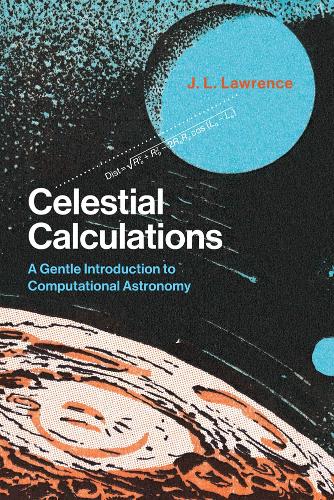
Celestial Calculations: A Gentle Introduction to Computational Astronomy
(Paperback)
Publishing Details
Celestial Calculations: A Gentle Introduction to Computational Astronomy
By (Author) J. L. Lawrence
MIT Press Ltd
MIT Press
14th May 2019
14th May 2019
United States
Classifications
General
Non Fiction
522
Physical Properties
Paperback
392
Width 152mm, Height 229mm, Spine 22mm
Description
How to predict and calculate the positions of stars, planets, the sun, the moon, and satellites using a personal computer and high school mathematics.Our knowledge of the universe is expanding rapidly, as space probes launched decades ago begin to send information back to earth. There has never been a better time to learn about how planets, stars, and satellites move through the heavens. This book is for amateur astronomers who want to move beyond pictures of constellations in star guides and solve the mysteries of a starry night. It is a book for readers who have wondered, for example, where Saturn will appear in the night sky, when the sun will rise and set, or how long the space station will be over their location. In Celestial Calculations, J. L. Lawrence shows readers how to find the answers to these and other astronomy questions with only a personal computer and high school math. Using an easy-to-follow step-by-step approach, Lawrence explains what calculations are required, why they are needed, and how they all fit together. Lawrence begins with basic principles- unit of measure conversions, time conversions, and coordinate systems. He combines these concepts into a computer program that can calculate the location of a star, and uses the same methods for predicting the locations of the sun, moon, and planets. He then shows how to use these methods for locating the many satellites we have sent into orbit. Finally, he describes a variety of resources and tools available to the amateur astronomer, including star charts and astronomical tables. Diagrams illustrate the major concepts, and computer programs that implement the algorithms are included. Photographs of actual celestial objects accompany the text, and interesting astronomical facts are interspersed throughout. Source code (in Python 3, JAVA, and Visual Basic) and executables for all the programs and examples presented in the book are available for download at https-//CelestialCalculations.github.io.
Reviews
A recommended read for anyone looking to understand how we can predict where celestial objects will appear in the sky
BBC Sky at NightThis book is quite an achievement.
European Mathematical SocietyAuthor Bio
J. L. Lawrence is Chief Technology Officer for a company that builds computer systems for the government and commercial satellite customers.
